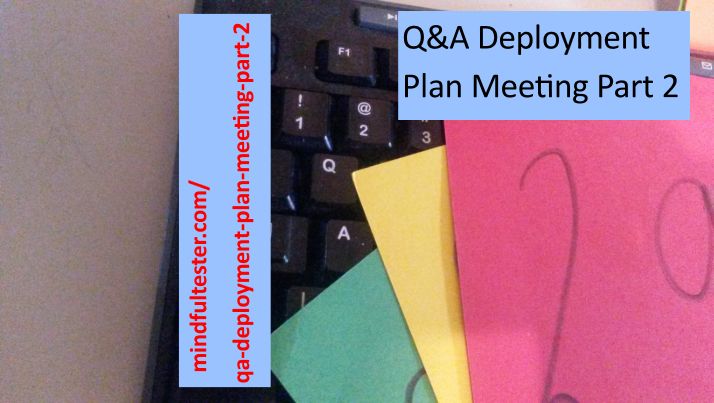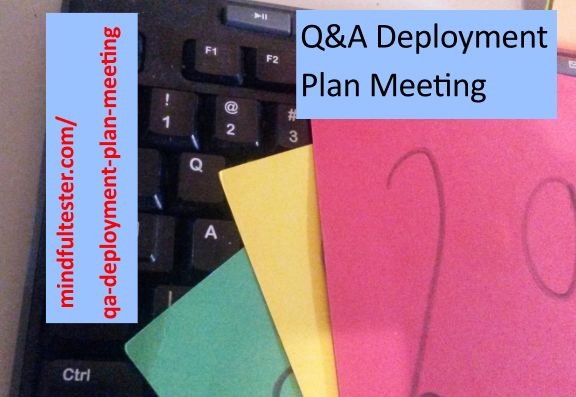A single note might be forgotten; a melody might be engraved in one’s memory.
Words can be compared with music notes. In most cases a single word does not make much sense for a tester. Performance is too vague, good too ambiguous, funny too personal. In my previous blog post I described, how I had gathered useful information and created test ideas using mind maps. Now I had some groups of words, pieces of a melody. Time for music!
Let’s have a look
Now I had a lot of test ideas. The best way to combine them is to use a test charter. The first test charters were not exciting like “Explore the interface by finding the right buttons for the functions”. This sounds silly, but I could not explore, what I could not find.
So what about the two screens as mentioned in the title? During my test I had two computer screens in front of me. On one screen the Application Under Test was shown, on the other screen my Word Processor. With a turn of my head I could switch between the application and my notes.
Let’s make notes
At the start of my test session I noted relevant information like day, time, version, and test database in my document. Sometimes I described actions I had performed. I did not write all my actions, which would slow down the tests or my flow of thoughts. In case of possible bugs I would go back and describe other relevant steps for a proper repro path or reproduction path of the bug. Print screens were also useful to accelerate the note taking.
The programmer had warned me, that it was not possible to schedule the data exchange. So I only tried to look at the buttons. I found a button and clicked on it by accident. (A typical case of an automatic target seeking index finger.) This was a waste of time. But the application was still stable, so I assessed the situation. I had started the ad hoc operation.
I switched to the Windows Explorer. Maybe some traces of my action were still visible. In a subdirectory for temporary files I found interface files, which had been created shortly before. This was a bug: temporary files must be deleted after use. And a great opportunity to dissect the files.
Let’s cover
The structure of the interface files was relatively simple. So I chose a mind map to record the coverage. For every file a branch was added. For every type of record a sub branch was added to the branch of the file. If the record had passed the tests, I placed an OK icon on the branch. Otherwise a NOK icon was placed.
In case of files with many combinations I once used a spreadsheet to describe the coverage.
Let’s debrief
After the first test charter I noticed, that I spent more than the planned 1 hour. On the other hand I had started testing the most important part of the interface, the files. The one hour limit was too short for a good test session, so I extended it to two hours in later test sessions.
Then I updated my mind maps. I used a partial filled circle icon to indicate, how much I had completed the test charter. Furthermore I used similar icons to mark the progression of my test ideas. So one screen contained my mind map and the other screen my document with my notes.
Let’s ask
Whenever I had any questions, I added those to the mind maps. I marked the branches with question mark icons. A question could be like “How many attempts are made to transfer the files?” After I got the answer, I would put it in the mind map, removed the question mark icon, and updated the test charter mind map, if necessary.
During the test I asked the programmer, whether I had to test both the ad hoc service and the scheduled service in depth. He assured me, that the same code was used for both services. This saved me a lot of time. The heuristic Avoid duplication of code had been used.
Let’s update
Every day I would look to the test ideas to be tested. Then I looked to my test charters. I focused on the test charters with the highest product risks. On a daily basis the mind maps were updated with every piece of information and progression was tracked.
In the meantime the option to schedule services for the interface was gradually implemented. I started to add branches in the information mind map to describe the proper steps to start up the services. Because this process changed regularly, I modified my mind map accordingly. I noticed that my fellow testers also were struggling with services. So I put this information next to the mind maps in the knowledge management system.
Let’s use markers
During the tests I used the two markers TODO and BUG in my notes. After BUG a short description of the unwanted situation was given most of the times accompanied by a print screen. TODO was used to mark down situations, which needed further investigation. If I ran out of ideas during a test session, then I searched for TODO. At the end of the session I would file bug reports for situations marked with BUG. Afterwards BUG was replaced by the defect number and short description.
Over time my use of keywords changed. My notes were a chronological list of actions and print screens. New notes were added at the end of the document. Sometimes it was hard to reproduce bugs. So I used hash tags like in Twitter like #DoubleTime. I replaced the marker BUG with my own test tag. At the end of the document I placed #DoubleTime. Then I started to make notes to reproduce the bug. Of course not all strange situations were reproducible. I noted that and marked it with #Remarkable. In the future strange situations could be found by looking for #Remarkable in the content of the files using Windows Explorer.
This system was still awkward. Now I had two places in the file referring to the same strange situation. Then I started to use indent like this:
01-okt Invalid value shown on screen
Let’s look forward
At the end I stored the latest versions of my mind maps in the knowledge management system of my company. Because the files had been created by a non-standard program, I added images of the mind maps as well. This saved some mouse clicks for the interested reader. I also updated the steps to install the services in a proper way.
It was a nice job. I had experienced exploratory testing and learned a lot. Now it is time for me to move on.


